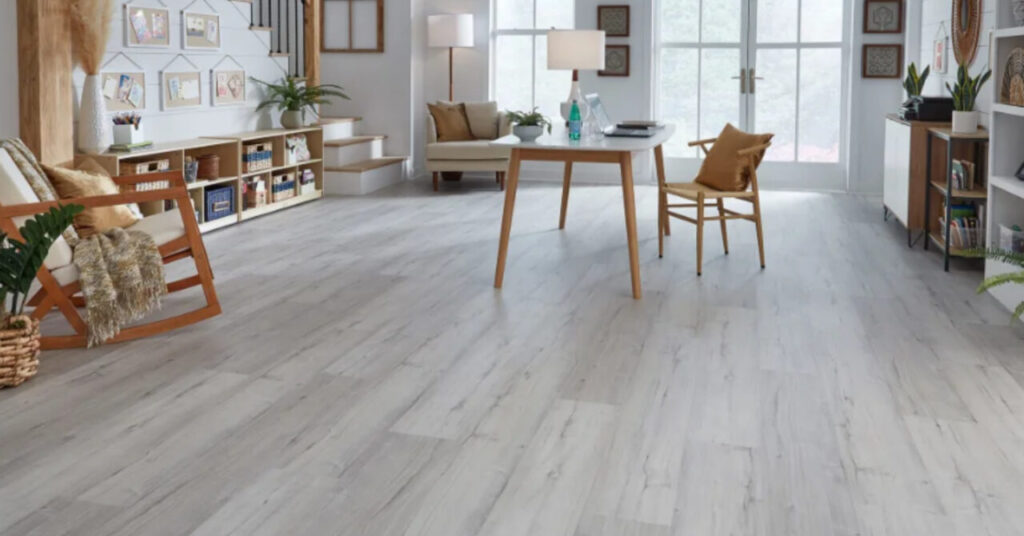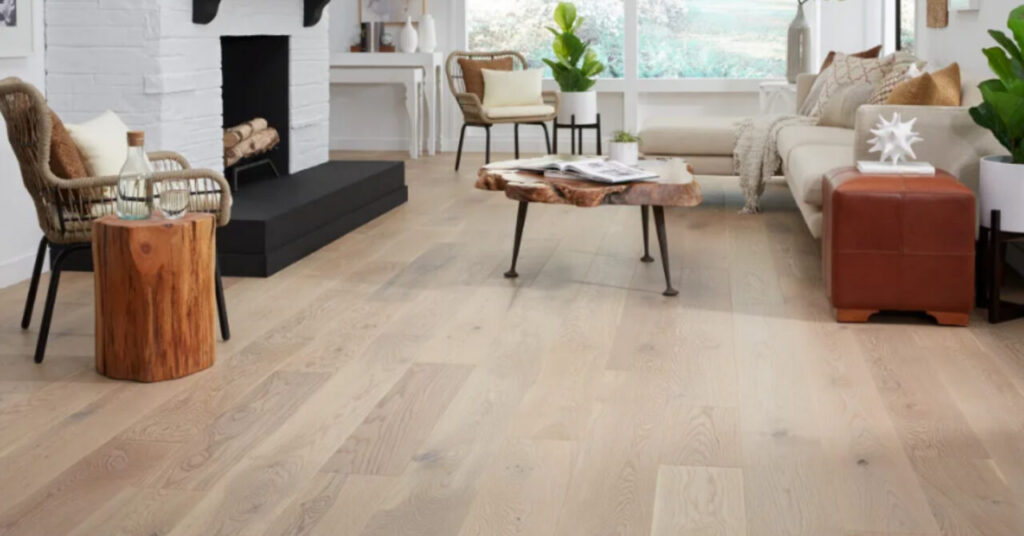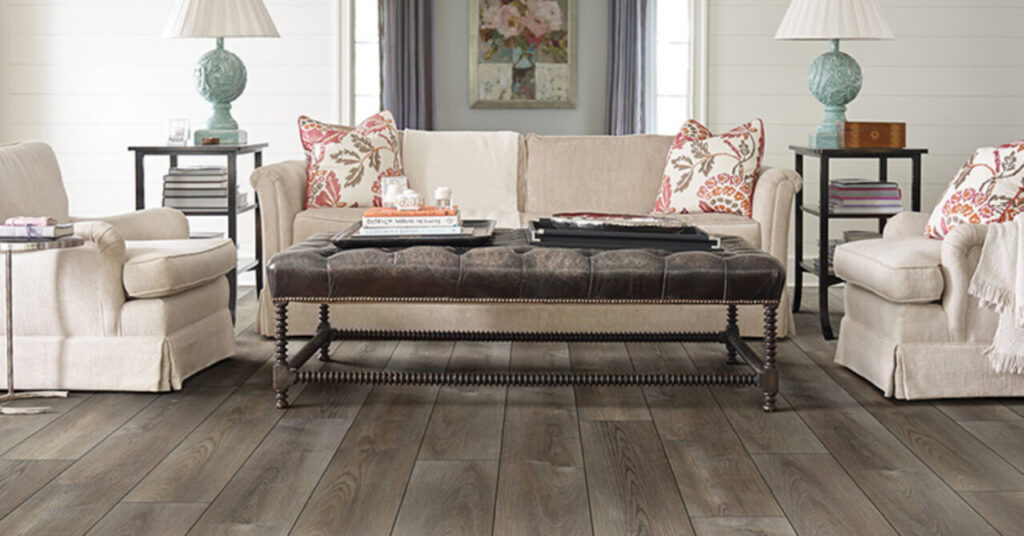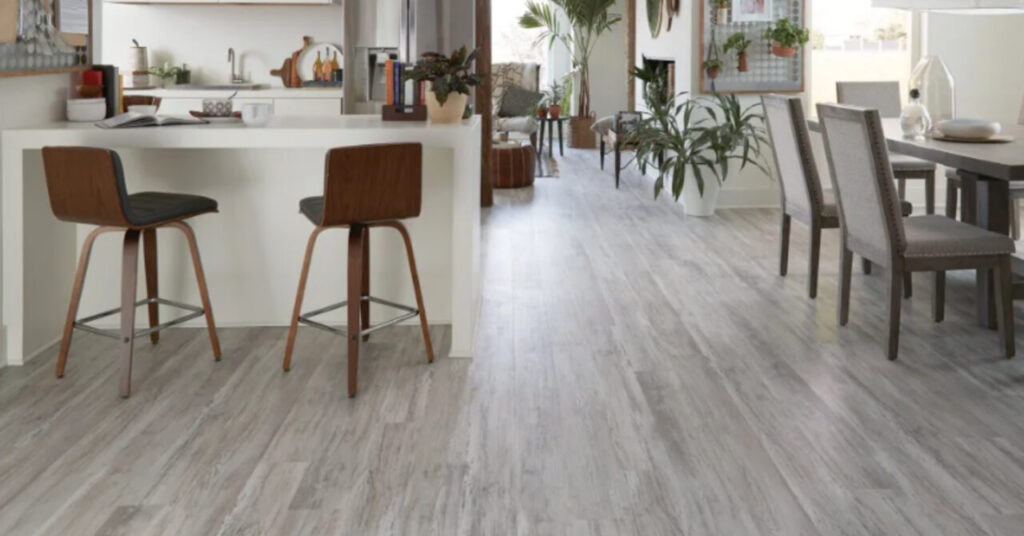Vinyl plank flooring is a great option if you are looking for a durable, stylish and affordable flooring option. In spite of the fact that there are so many vinyl plank flooring products on the market, how do you decide which one is best for your home?
When it comes to choosing vinyl plank flooring, there are a few things you should take into account:

I. Introduction. The durability of your flooring is very important to you. How long do you expect it to last? There are some vinyl plank flooring products that are designed for high traffic areas and are designed to last longer than other kinds.
2. Style: What kind of look are you going for? In addition to wood-look planks and stone-look tiles, vinyl plank flooring comes in many different styles.
3. Budget: Would you be willing to spend a certain amount of money on flooring? However, vinyl plank flooring still comes in a wide range of prices compared to other flooring options.
4. Installation: Are you interested in installing the flooring yourself or do you want to hire a professional to do the job for you? In some cases, vinyl plank flooring can be easily installed by an individual at home, while in others, professional installation is required.
5. Maintenance: The amount of time and effort you are prepared to spend maintaining your flooring depends entirely on how much you value it. In some cases, vinyl plank flooring is water resistant and easy to maintain, while in other cases it needs to be cleaned more frequently.
Your choice of vinyl plank flooring will be narrowed down if you consider these factors.
Types of Vinyl Plank Flooring
As a homeowner, you have the option of choosing from a variety of different types of vinyl plank flooring. It is important to note that there are two types of vinyl planks. A vinyl floor covering is made out of a single piece of material, which makes it incredibly strong and durable.

Moreover, this carpet has an easy installation process and is a good option for areas that are heavily trafficked. It is also possible to find engineered vinyl plank flooring, which is the second type of vinyl plank flooring.
Multiple layers of vinyl are used to make this type of flooring, making it very durable and long lasting. A good choice for areas which receive a high volume of traffic is that it is easy to install.
A luxury vinyl plank flooring is the third type of vinyl plank flooring that can be found on the market. The purpose of this type of Multilayer vinyl flooring is very durable and made of several layers. Aside from being easy to install, this flooring is also suitable for areas where there is a lot of traffic.
Solid Vinyl Plank
There are many types of flooring on the market today, but solid vinyl planks are one of the most popular. There are a number of different styles and colors available, and it is easy to install and durable. It is also a good idea to choose solid vinyl planks for high-traffic areas or homes with pets, since the solid vinyl planks are resistant to scratches as well as stains.
Engineered Vinyl Plank
It is a type of flooring that is designed to look like wood, but is actually made out of synthetic materials, such as vinyl, but can have the look and feel of wood. There is usually a layer of wear on top of it that protects the vinyl composite from scratches and wear as well as the fact that it is made from a vinyl composite material. As a durable and easy-to-care-for flooring option, engineered vinyl planks are a popular option among many homeowners due to the fact that they are durable.

luxury vinyl plank
The term ‘luxury vinyl plank flooring’ (LVP) has become increasingly popular, although it can be misleading at times. Most vinyl plank flooring can be referred to as “luxury” regardless of their quality and there are a variety of luxury vinyl plank brands available, so it is important to make sure that there is no one best luxury vinyl plank brand and to carefully check the specifications before committing to one. Alternatively, you can refer to the engineered vinyl planks as “EVP” (engineered vinyl planks).
As a general rule, LVP consists of three layers: the base, which is made of vinyl and other fillers, the printed pattern layer, (which is where the wood-look comes from) and a spray-on clear layer, which offers protection against scratches, scuffs, and stains.
There are different types of installation options when it comes to LVP products, but in general, LVP can be installed by gluing planks directly to the subfloor, using a click-lock system to keep the flooring in place (sometimes referred to as a floating floor), or in a loose-lay format, which allows the planks to be laid as they please.
WPC Vinyl Plank Flooring
New types of flooring are becoming more popular, such as wood plastic composite (WPC) vinyl plank flooring. Unlike traditional hardwood flooring, it is made from a combination of wood and plastic. Besides being durable and easy to maintain, WPC vinyl plank flooring is also resistant to moisture and humidity. Additionally, you can choose from a wide range of colors and styles to suit your home’s style.
SPC Vinyl Plank Flooring
If you are looking for a stylish and durable flooring solution, SPC vinyl planks are a great choice. Decorative layers are applied over a strong and stable core material. The ease with which this flooring can be installed makes it perfect for areas that see a lot of foot traffic or are subjected to high levels of wear and tear. In addition to being easy to install and maintain, SPC vinyl plank flooring is also reasonably priced. For this reason, it is a popular choice with consumers as well as business owners.

Waterproof Vinyl Plank Flooring
In addition, vinyl plank flooring can be confusing when it comes to waterproofing. There is a 100 percent waterproof component in the form of PVC. In addition to plasticizers, both WPC and SPC planks have some flex without splitting, which is also helpful in shedding water.
While most vinyl plank flooring is waterproof, there are some types of vinyl plank flooring that are only classified as water-resistant. There are some areas where this product should not be used, such as bathrooms and kitchens, as there is the possibility of high humidity or frequent spills. In some cases, vinyl plank flooring may not survive a flood if it is submerged for a long time, even if it is fully waterproof.
How to install vinyl plank flooring?
If you are looking for a way to update the look of your home without having to break the bank, vinyl plank flooring is a great choice. In terms of the installation process, it is relatively straightforward, and most people can do it on their own. Vinyl plank flooring can be installed in a variety of ways. Here are some of the basic steps to follow:
1. Clean the floor by sweeping it and vacuuming it first in order to get rid of any dirt or debris that may be present.
2. There will be a requirement that a vapor barrier must be installed if you are installing the flooring over an existing floor. The new floor will be protected from moisture damage this way.
3. Vinyl plank flooring can be installed once the vapor barrier has been installed. The longest wall in the room should be the first row of planks.
4. Ensure that as you go along that the planks are level by using a level. In order to keep the planks in place while you level them, you may wish to use a small piece of plywood in order to help keep them in place.

5. The rest of the vinyl plank flooring can be installed once the first row is level. To avoid lining up the joints in the next row with the joints in the previous row, stagger the joints in each row.
6. In order to fit the planks of the last row, you may have to cut them in order to fit. In order to divide the plank, you will need to score it with the utility knife, then snap it in half.
7. Using a utility knife, trim any excess material from the edges of the room once the vinyl plank flooring is installed.
8. Finally, apply a sealant to the floor to help protect it from moisture.
How do I choose vinyl plank flooring?
You should consider the amount of traffic the area will receive when choosing the thickness of your new vinyl plank flooring. The thickness of your floor should be between 2 and 3 millimeters if you are planning to install it in an area with low traffic. It is recommended that you choose vinyl planks between 3.2 mm and 4 mm for most areas in your home, including the family room and kitchen.
What thickness is best for vinyl plank flooring?
It is recommended that you use a plywood thickness of 4mm to 6mm in heavily used parts of the house while you should use a plywood thickness of 4mm or less in areas such as the bedroom.
Should floors be darker or lighter than walls?
A dark floor should contrast with a light wall, according to many home experts. There is a general rule that lighter walls and darker floors make a room appear larger. It is common for homeowners to prefer an interior that looks spacious. Low ceilings can, however, change the rule.
Do you need underlay for vinyl plank flooring?
In most cases, luxury vinyl tiles or vinyl flooring does not require an underlay in order to be installed. There is no need for underlayment on vinyl floors, because they come with a base layer, making the addition of underlayment unnecessary. In addition to being extremely durable, the vinyl flooring is extremely comfortable to walk on due to its baselayer.
What does mil mean in vinyl flooring?
1/1000th of an inch
Wear layer thicknesses are measured in mils within the vinyl flooring industry. 1000 mils equal one inch, which is 1/1000th of an inch. To give you an idea of the thickness of common plastic food wrap, it is approximately 5 mils thick. Therefore, in other words, a 6 mil wear layer product is slightly thicker than a single sheet of plastic food wrap that is 6 mil thick.






